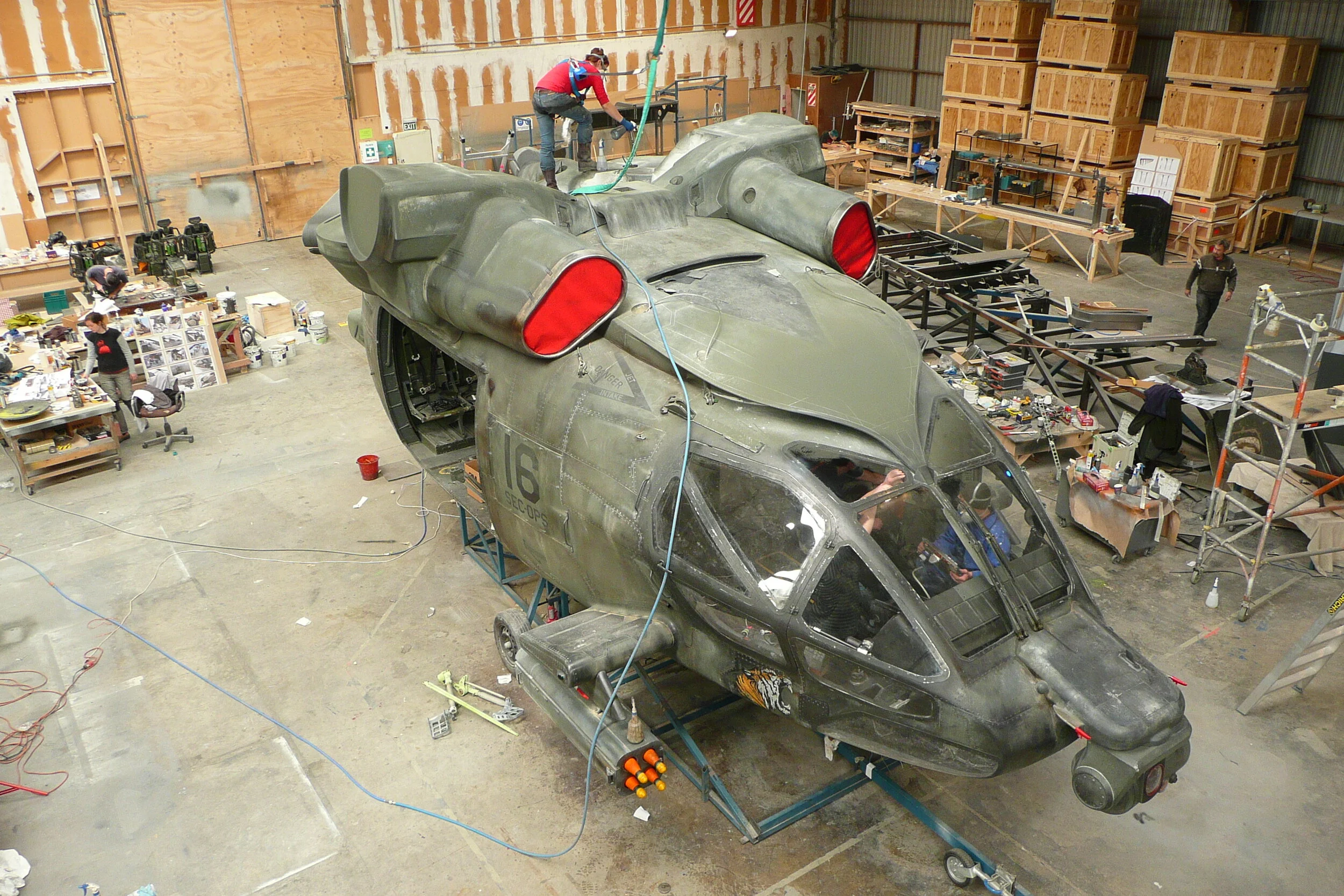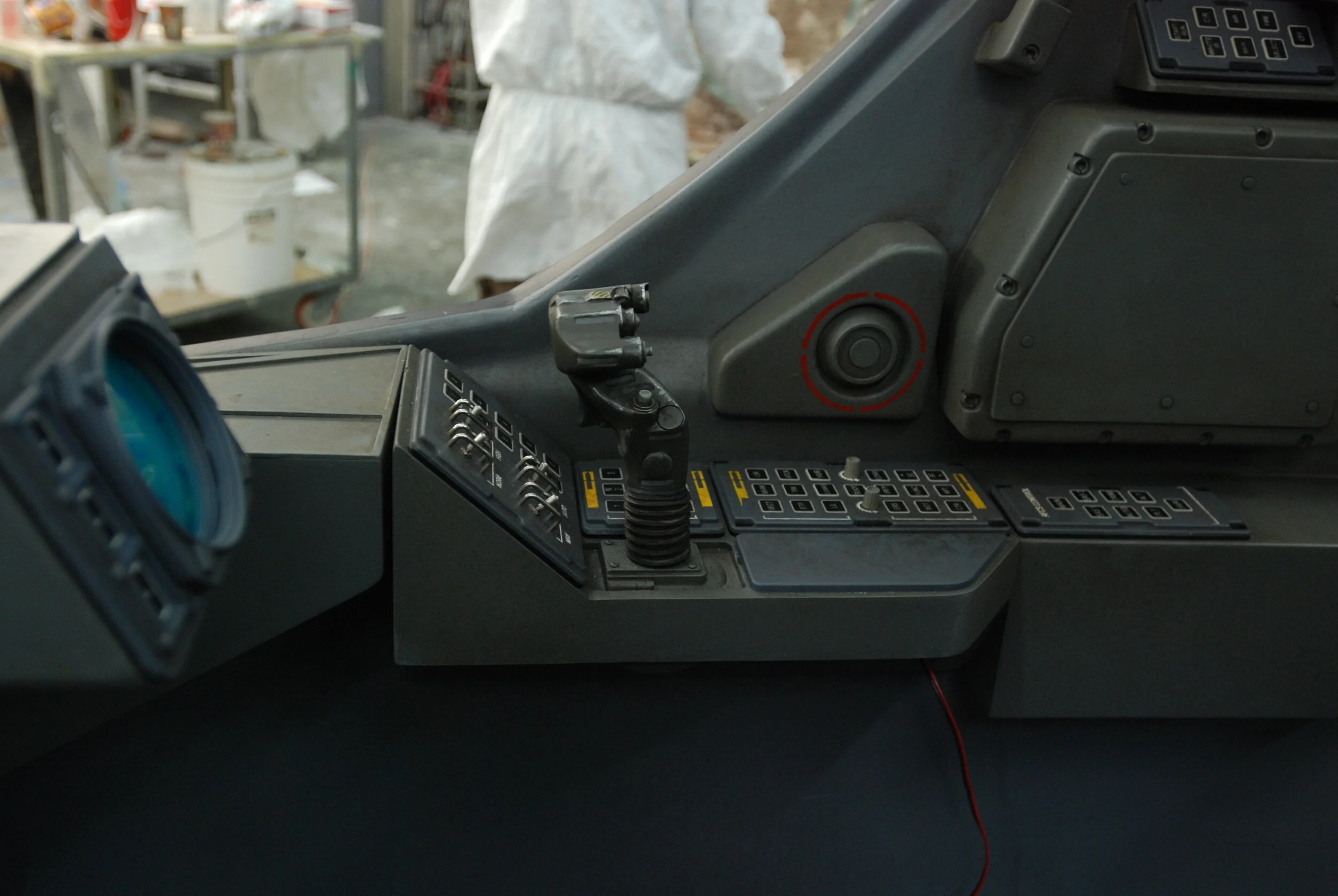AVATAR
SUPERVISING ART DIRECTOR live action: The art department on Avatar was made up of a live-action art dept., virtual art dept. and a mocap art dept. Live-action A.D. dealt with set design of all human related sets. Virtual A.D. dealt with the Pandora environments and characters. Mocap A.D. dealt with all the volume previz and virtual photography. My responsibility as the Supervising Art Director for live-action was to oversee set design for construction and vehicle manufacture. Also to fulfill my administrative duties.



Avatar was solely a digital art department. All design work was done in the computer as 3d file work. This ISV Venture Star concept illustration was a good example on how we presented design work to Jim.

In my first art meeting with Mr. Cameron he gave us an edict; we should think of Hell’s Gate as an oil rig 150 years in the future. When starting design tasks we made sure we defined the science that went into each space. Rick Carter and myself visited a state of the art oil rig in the gulf. I took exhaustive notes. Jim has a quick sense of functionality in the concept designs he sees. You must first satisfy his sense of function then you must intrigue his sci-fi tastes.









Ben Procter the concept designer on the cryovault was able to animate this concept design. Jim actually added the flex hose. His motivation was to add an element that would undulate as he put it, like seaweed. This would show the lack of gravity much like floating set dressing.


We situated the cryovault set on its side. When shooting zero G you must take advantage of gravity to show the direction of the desired float path. Since Jake was floating between his locker and his chamber the set was set to align with the float pattern.


Stan Winston studios built this 13 ft. tall poseable robot. The cockpit section could be removed and attached to a gimbal for action sequences.

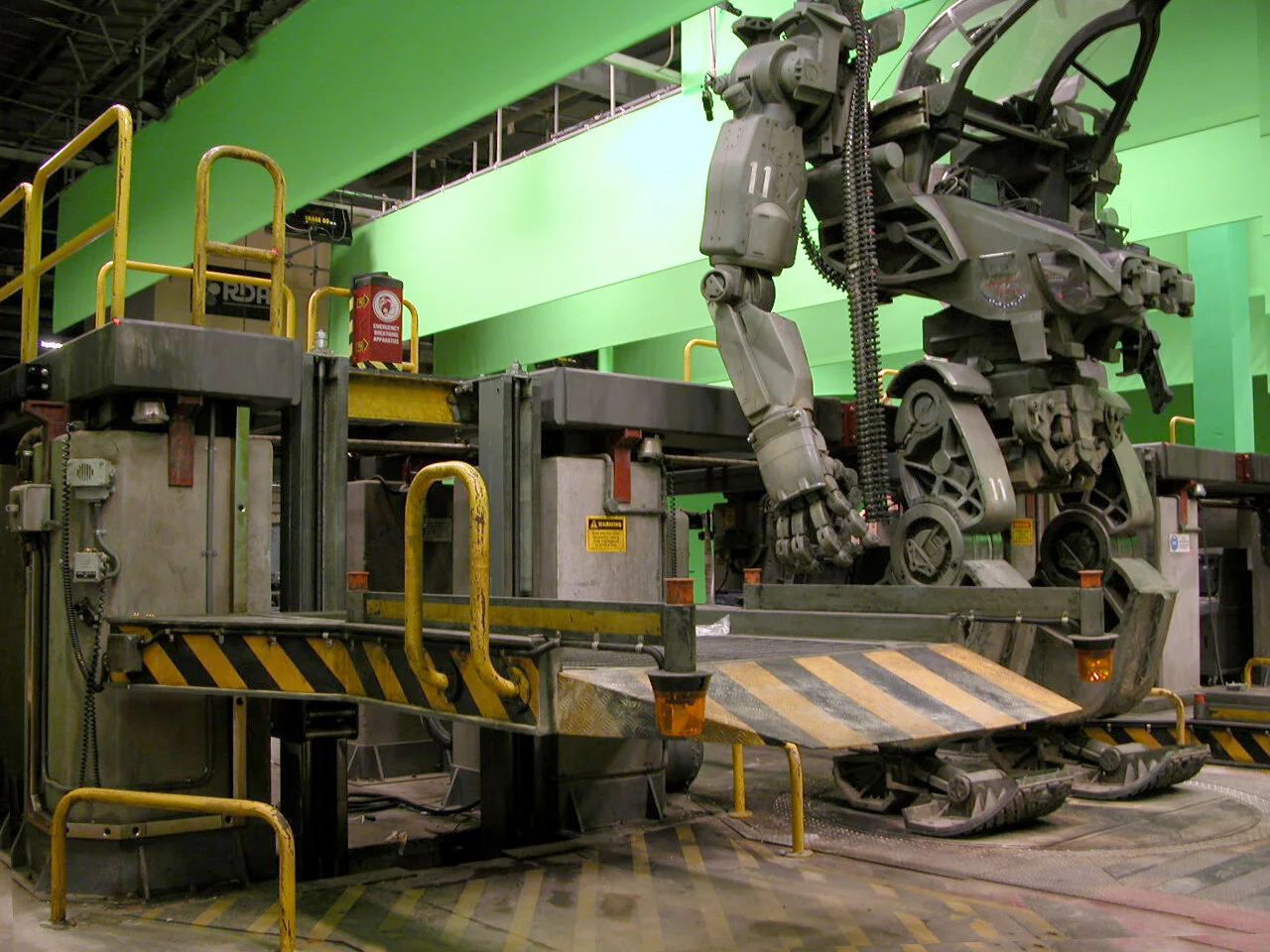











We did not have playback on the screens but utilized a backlit graphic. We could save money by having a lit screen for background. As a light source we utilized a luminescent film that was thin and could be curved to conform to the lens.







Those who know me understand my thoughts of science fiction doors. I feel it maybe the most important element in a sci-fi set, as it is the first and last element you see. If unsuccessful it can ruin one’s perspective of the environment. I asked to take on the design of all the doors. I worked with Joe Hiura and others on the doorways.







A portion of each aircraft was built. Here again to the extent of human interaction.



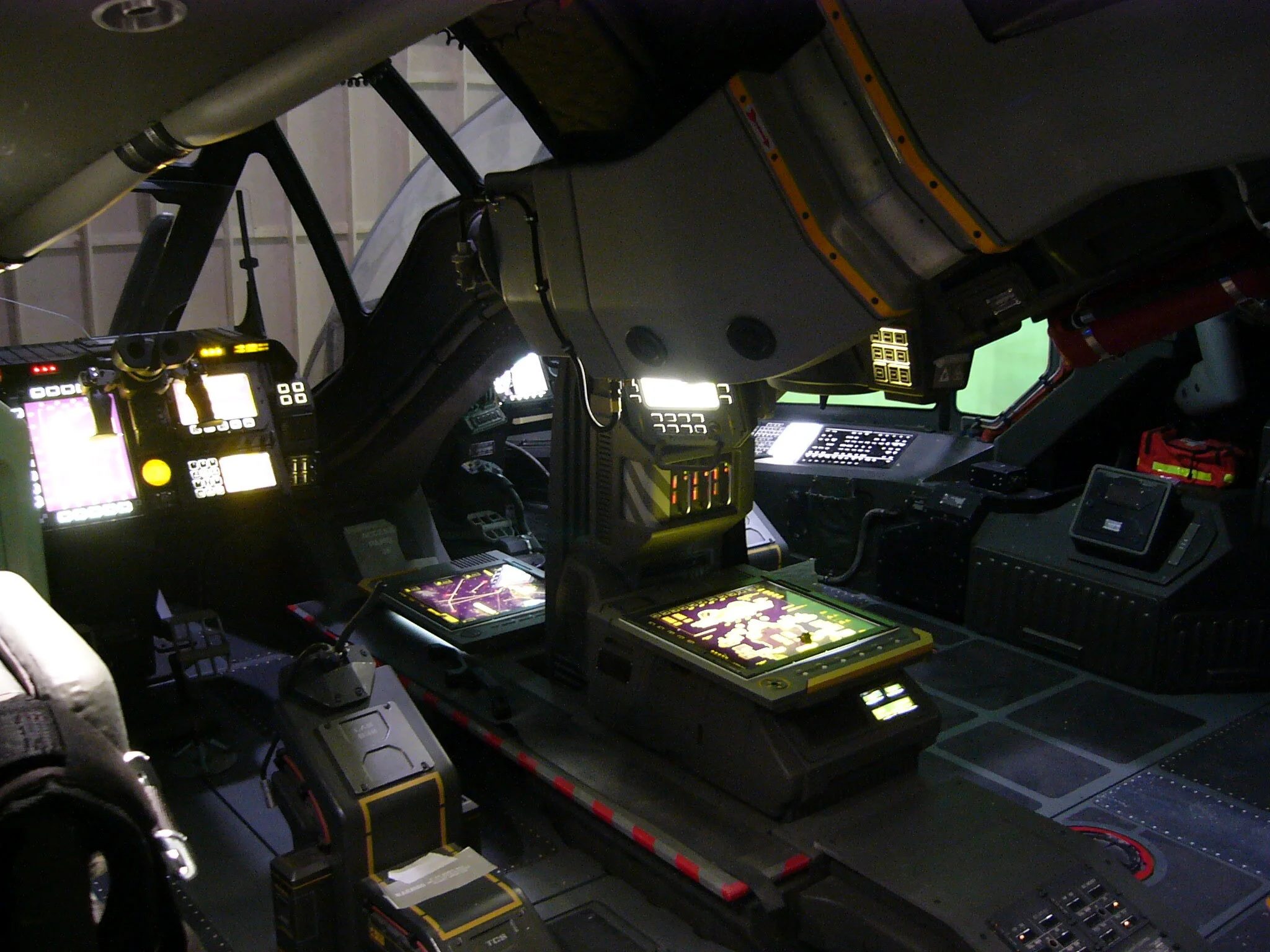








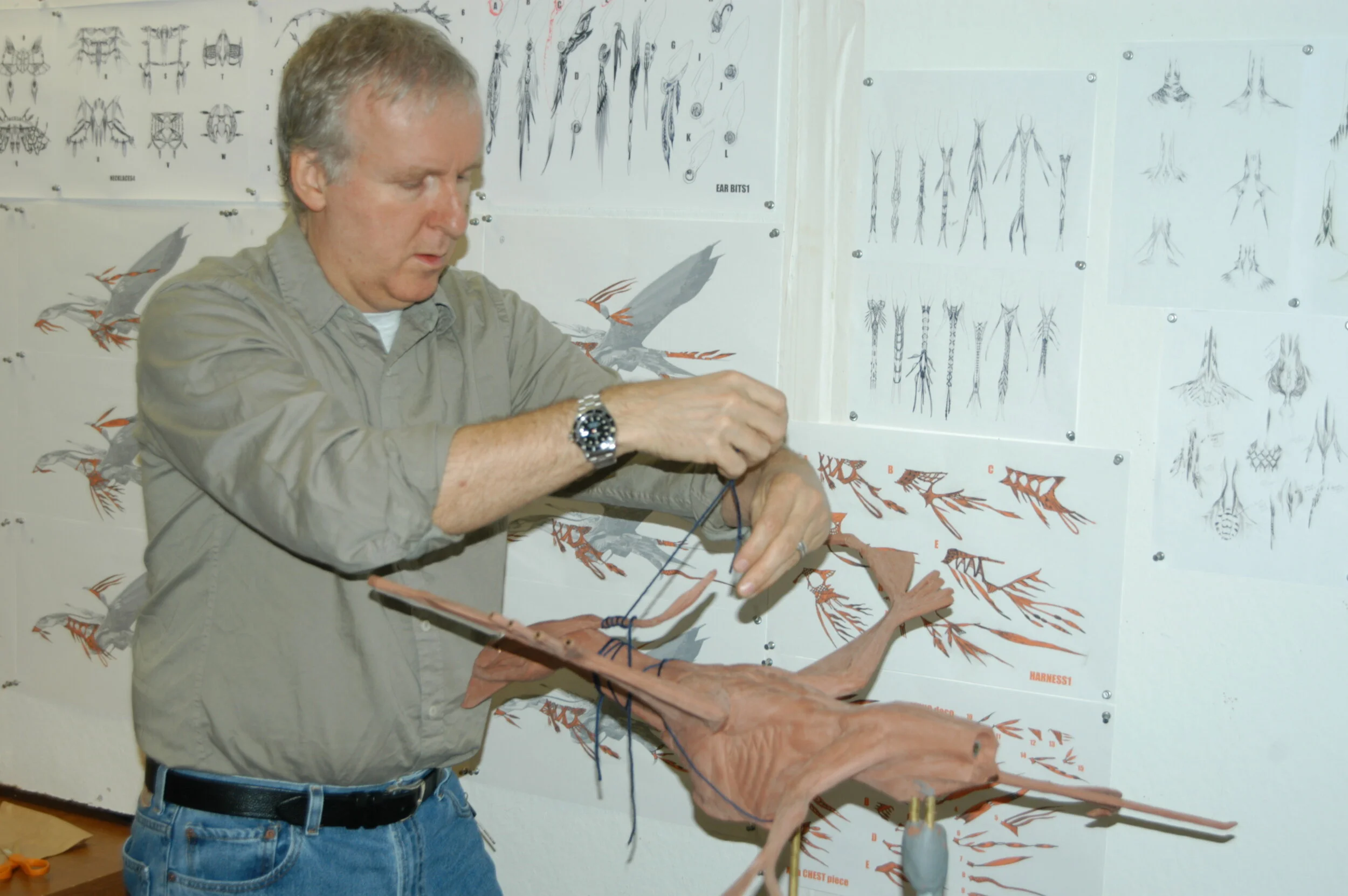

















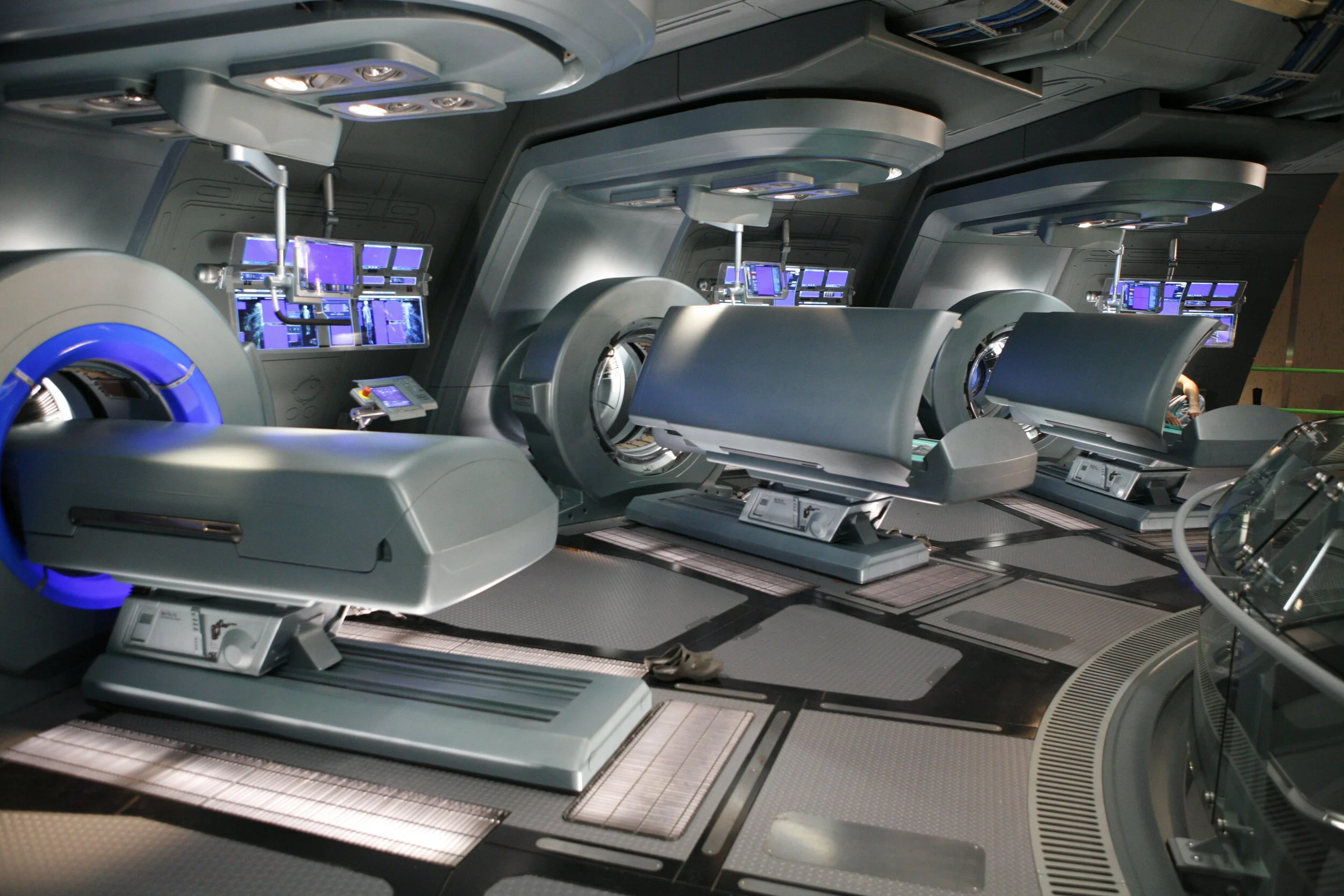

The Ops Center was one of the first sets we showed Jim in the volume. We had created this 3d illustrated model at a resolution that could be utilized by the mocap’s motion builder software. We set up the mocap stage with a platform that represented where the platform shown in the illustration would be. We tapped off perimeter walls and showed position of windows. We added simple furniture where the controllers sat and rigged them. So, if Jim wanted to move an element he could. Immediately Jim went into a story boarding blocking mode. This experiment proved quite the success.


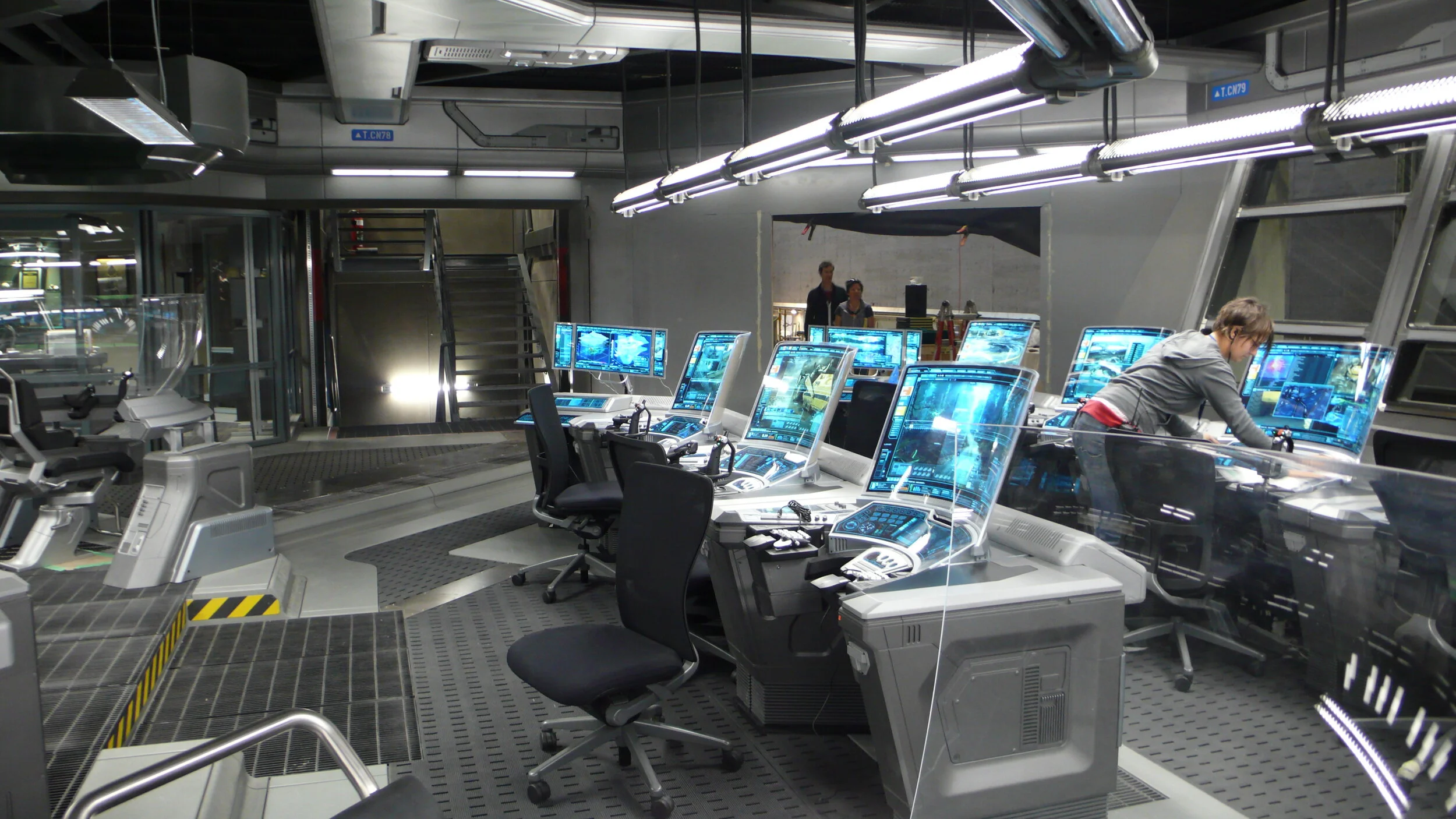





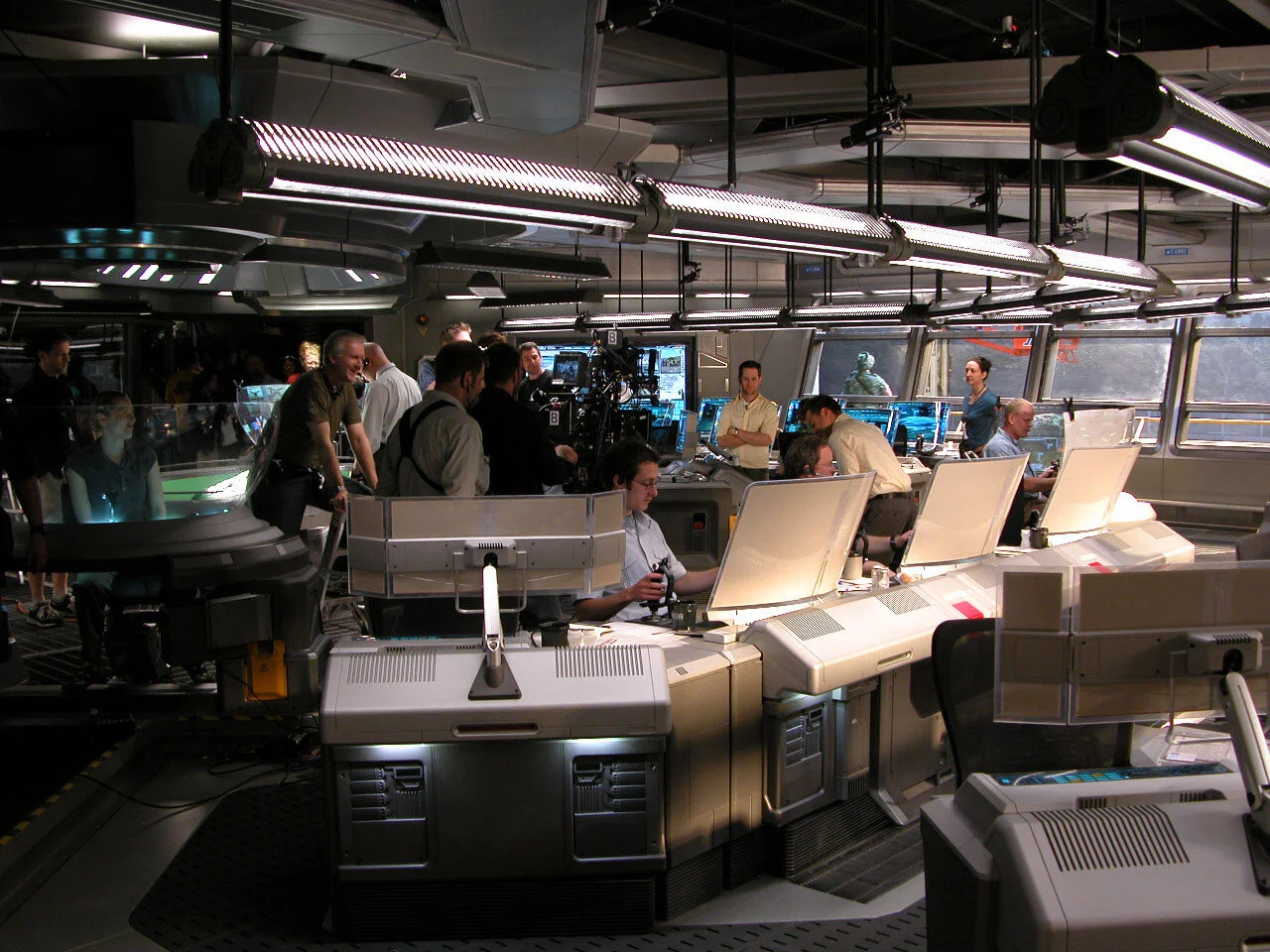
















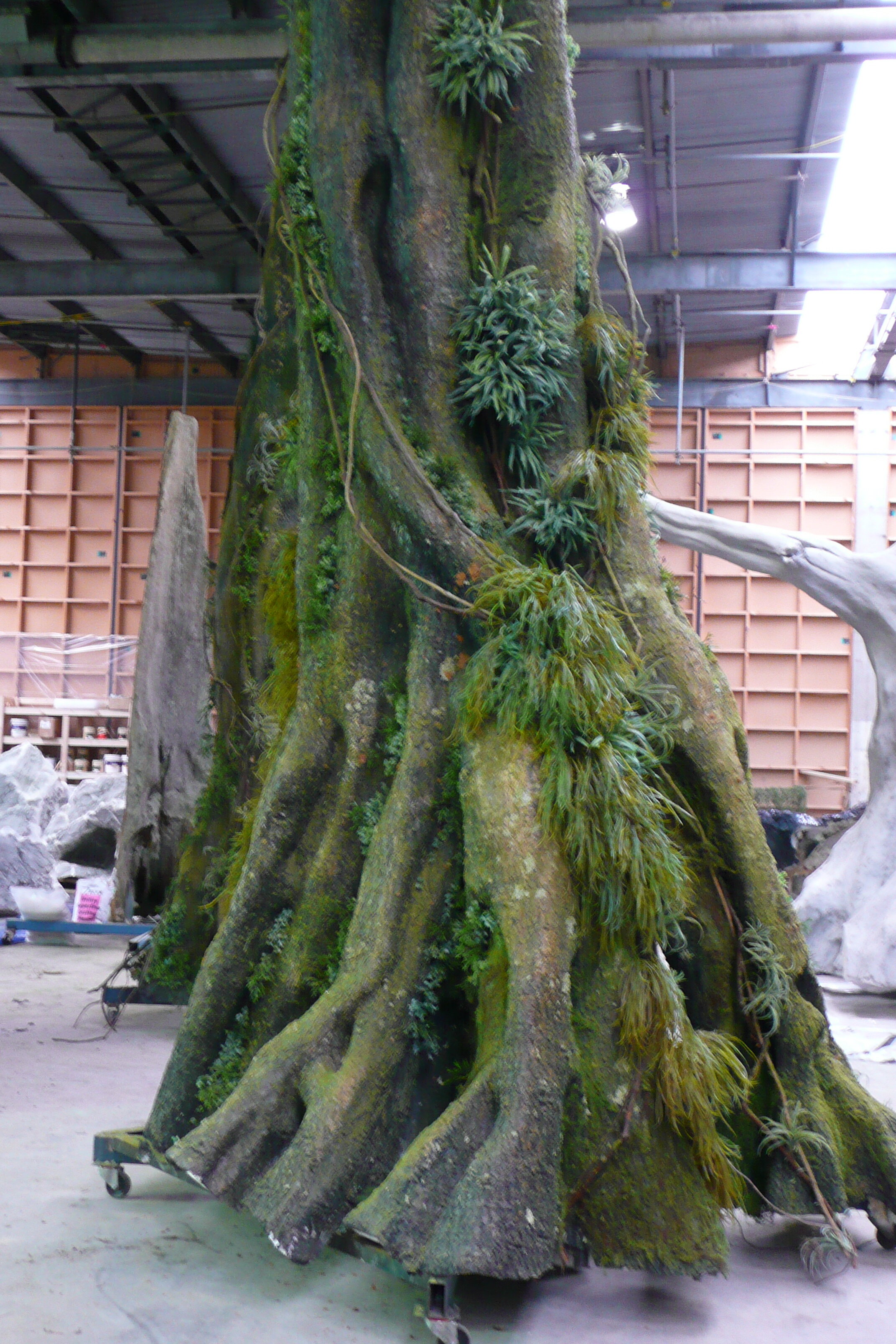






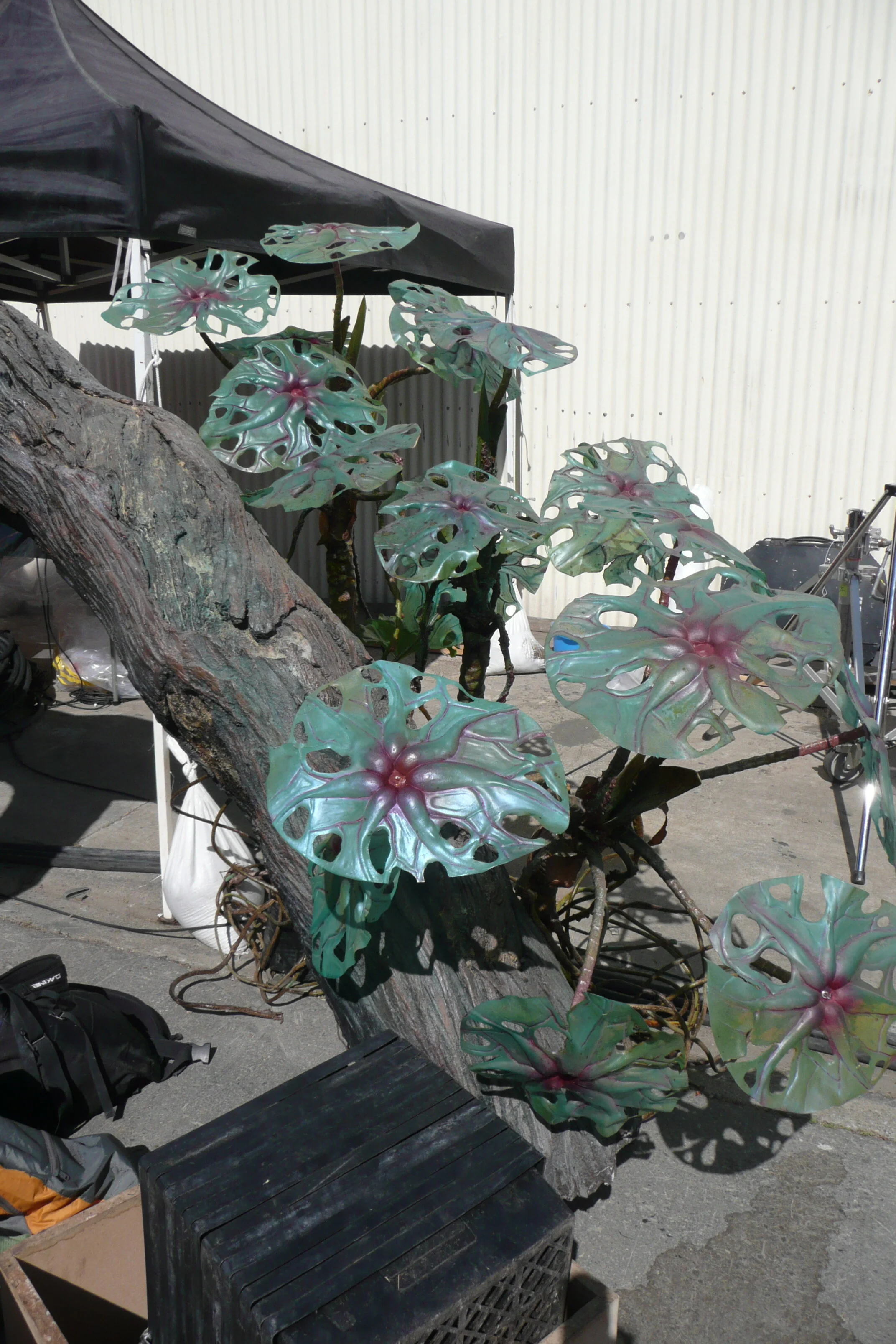

Most people who view Avatar perceive it as mostly CG created environments. It was, however, when human actors performed in a setting this was built but in limited scale. Whenever actors came in contact with the setting and enough of a perimeter around them to eliminate as much of the process screen contamination this was built.































